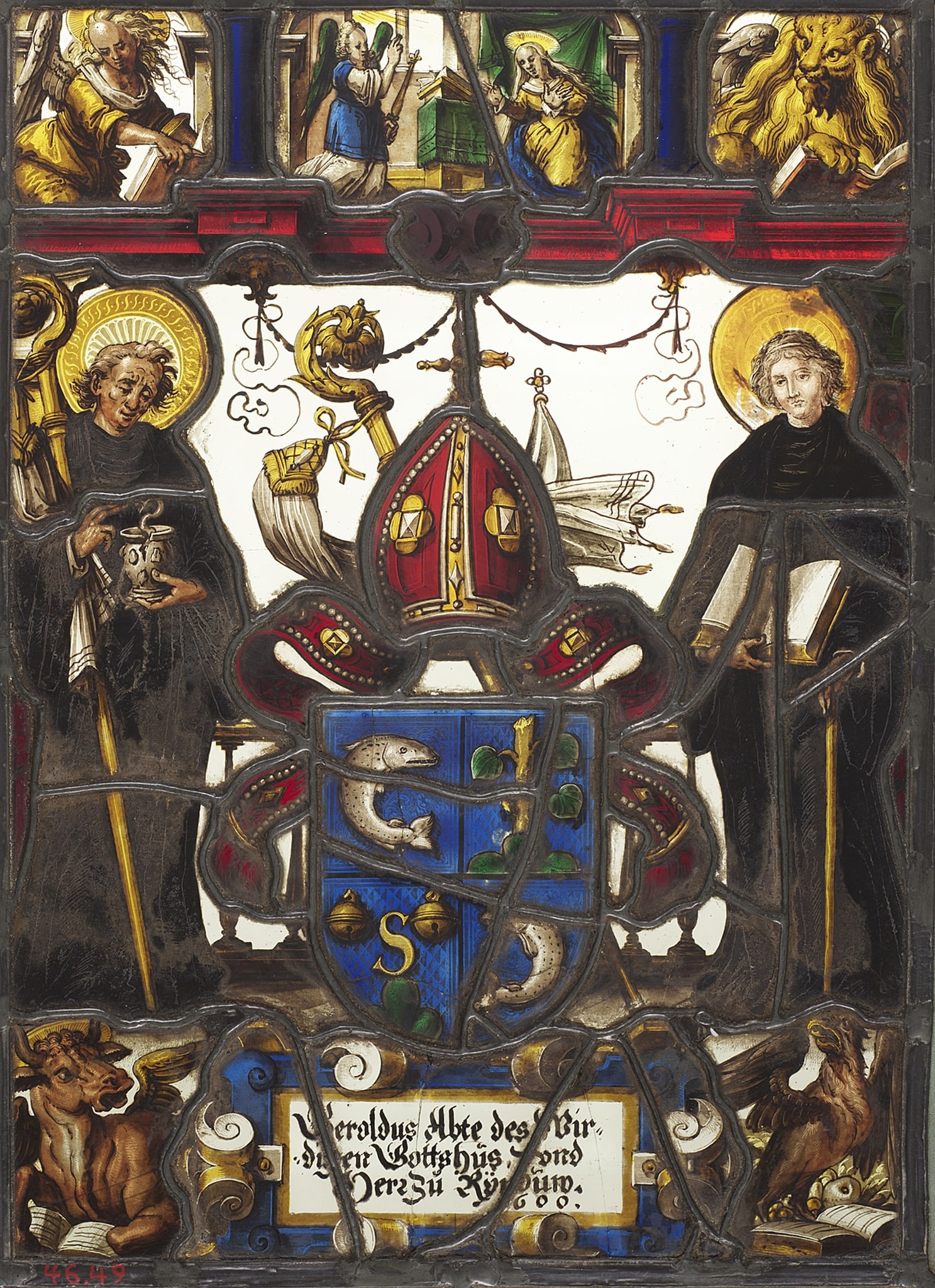Silhouetted against a white ground, a blue coat of arms surmounted by a red miter dominates the composition. To the left and right, dressed in dark monastic robes stand saints Benedict and Fintan. Benedict, on the left, holds a cup with a serpent and a crosier; Finton holds an open book and a walking stick. A segmented red lintel is above them. Symbols of the Four Evangelists occupy the four corners, at the top reading from left to right, Matthew and Mark, and at the bottom, Luke and John. All hold books. Except for John’s eagle shown in a full rendering, the symbols are depicted by their upper torsos. In the center, above the lintel, is an image of the Annunciation showing Mary kneeling and reading a prayer book on a stand. The inscription panel below the arms is framed by three-dimensional scroll work rendered in blue and gold.
11H(FINTAN) · männliche Heilige (FINTAN)
11H(JOHN) · Johannes der Evangelist, Apostel; mögliche Attribute: Buch, Kessel, Kelch mit Schlange, Adler, Palme, Schriftrolle
11H(LUKE) · der Evangelist Lukas; mögliche Attribute: Buch, (geflügelter) Ochse, Marienbildnis, chirurgische Instrumente, Malwerkzeuge, Schriftrolle
11H(MARK) · der Evangelist Markus, Bischof von Alexandria; mögliche Attribute: Buch, (geflügelter) Löwe, Schreibfeder und Tintenfaß, Schriftrolle
11H(MATTHEW) · der Apostel und Evangelist Matthäus; mögliche Attribute: Engel, Axt, Buch, Hellebarde, Schreibfeder und Tintenfaß, Geldbörse, Schriftrolle, Winkelmaß, Schwert
11I411 · die schreibenden Evangelisten
46A122(ZURLAUBEN) · Wappenschild, heraldisches Symbol (ZURLAUBEN)
73A522 · die Verkündigung: Maria sitzt
Arms of Zurlauben, Gerold I: Quarterly, 1 and 4 azure a fish argent (Rheinau), 2 pourpure on a triple mount vert a tree branch couped and leafed proper (Zurlauben), 3 pourpure on a triple mount vert an S argent between two bells or; crest: abbot's miter, crozier, and stole floating.
Geroldus abtt des wirl digen Gottshiis undl Kloster Ryhnaou 1600 (Gerold I Zurlauben, Abbot of the honorable Monastery and Cloister of Rheinau 1600)
none
